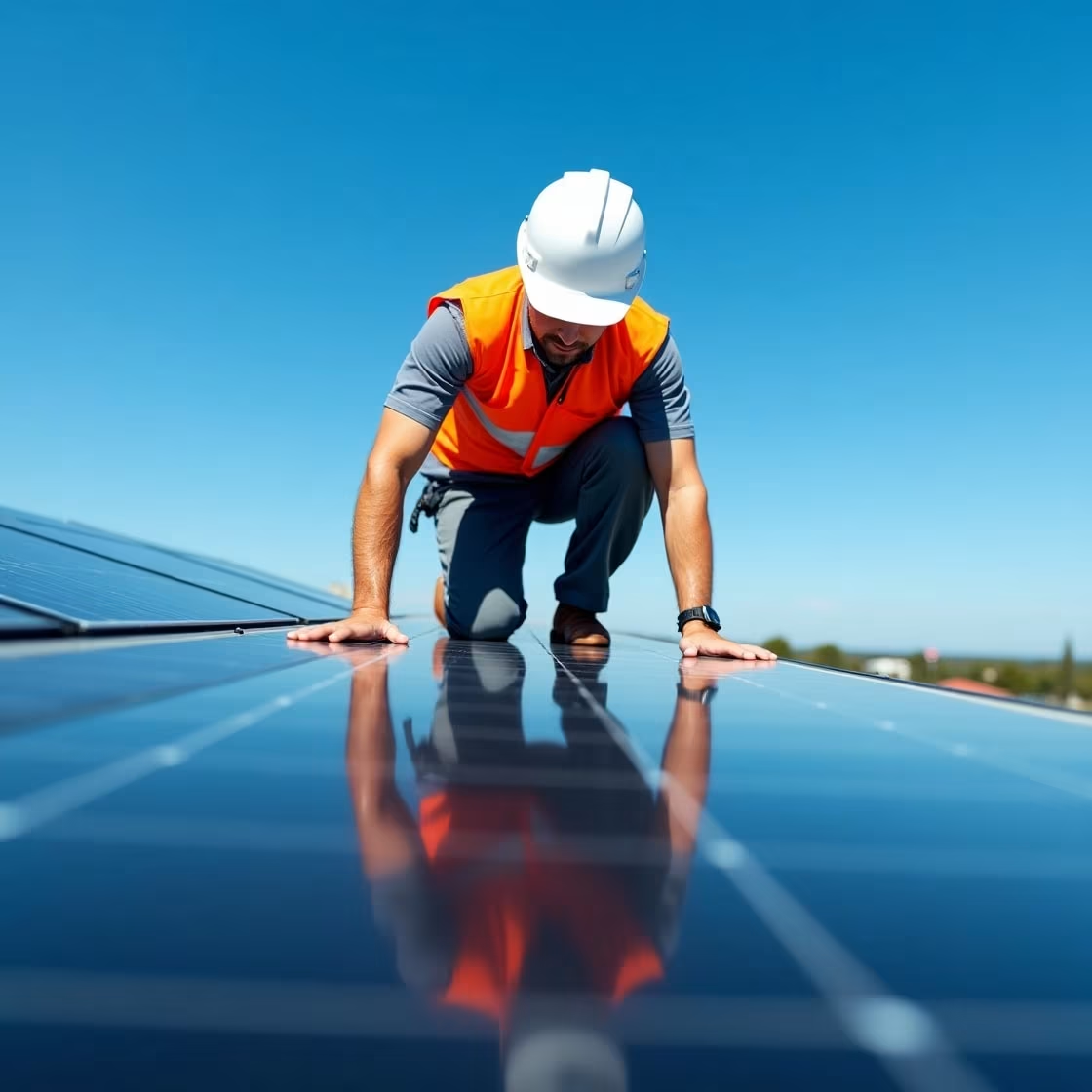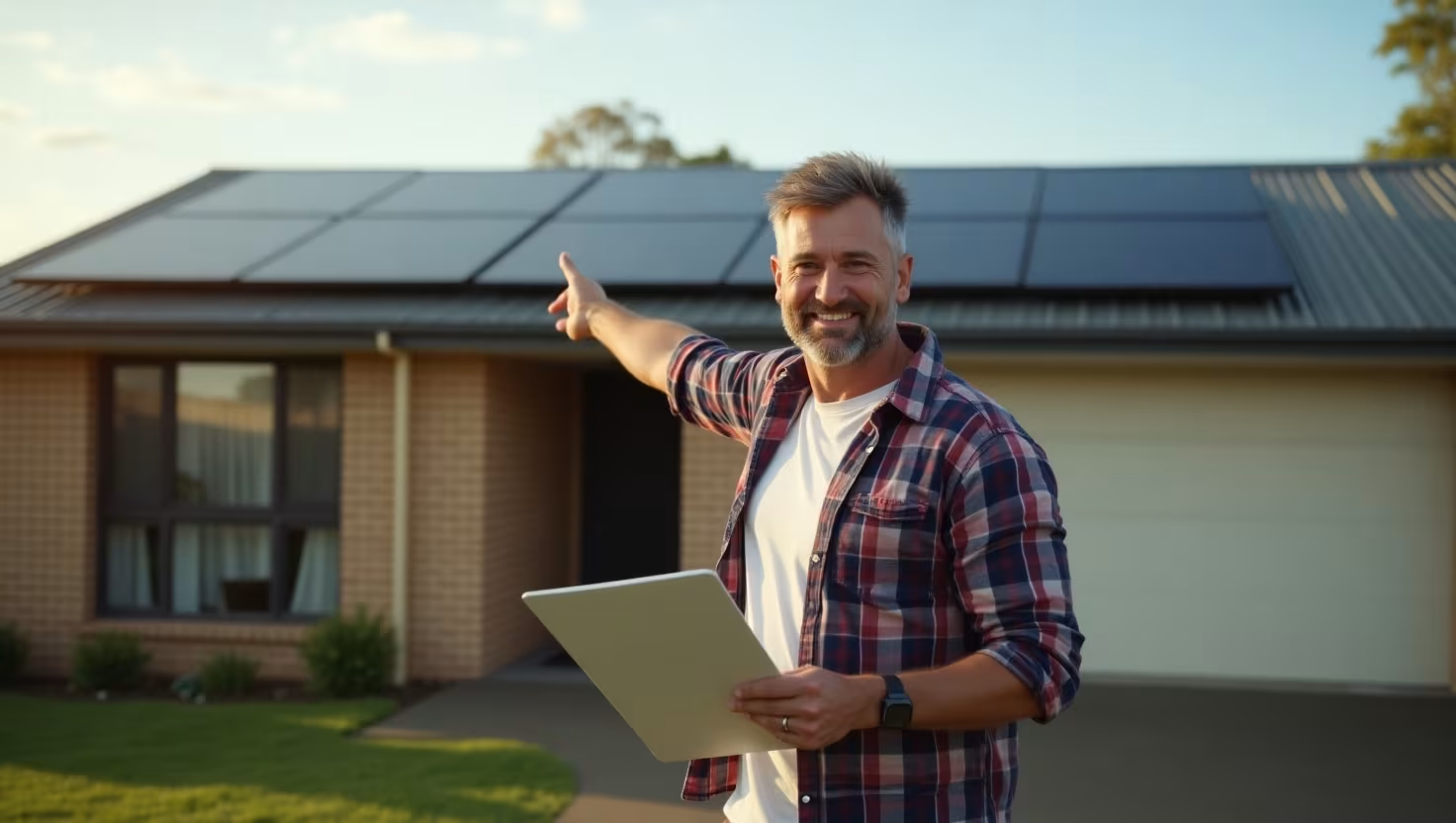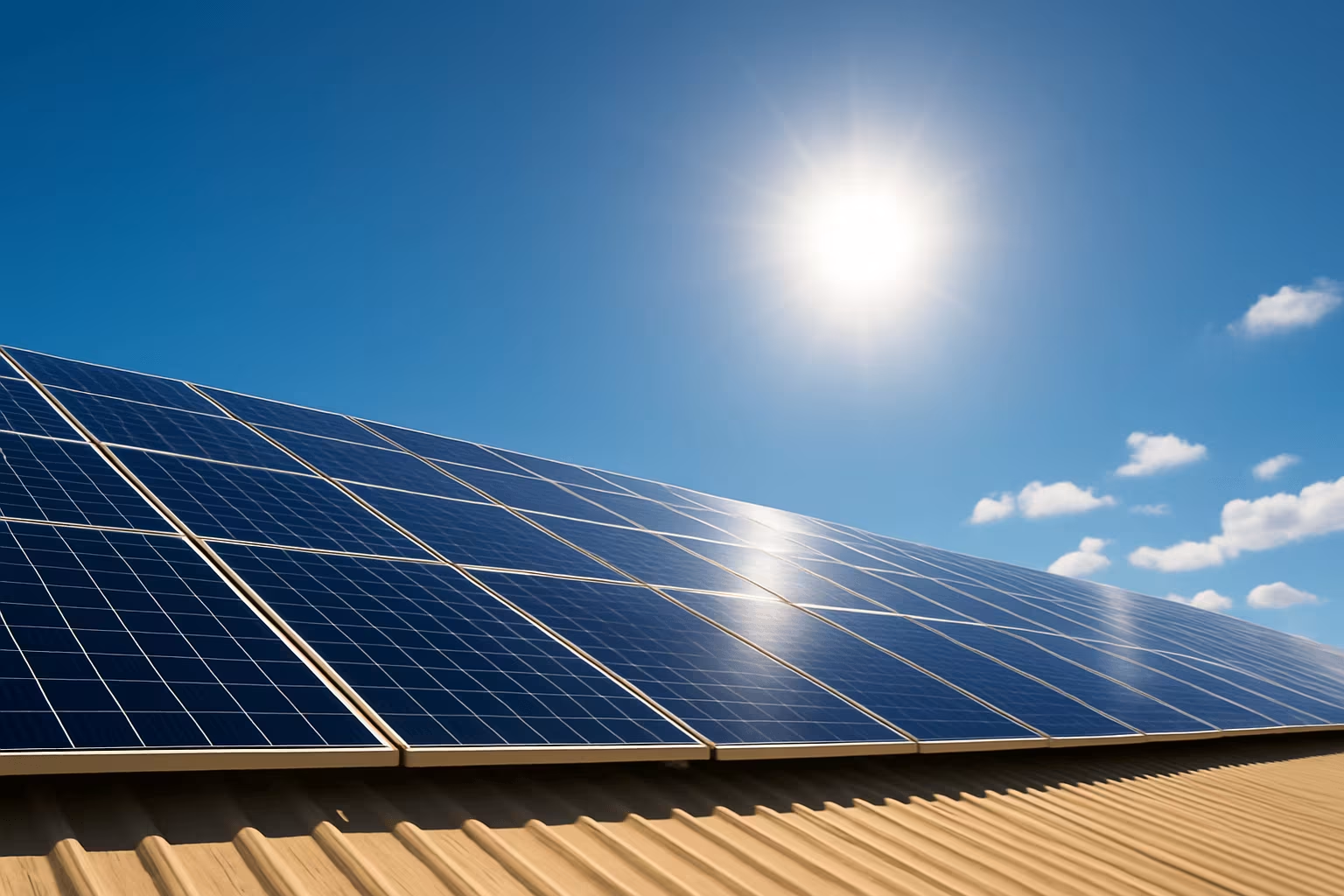Wondering if Your Roof Is Big Enough for Solar?
You’re not alone. One of the first questions homeowners ask is:
“Do I even have enough roof space for a solar system?”
The good news? Most Australian homes have enough space for a typical 6.6 kW solar system — the most common setup in 2025. But depending on your roof shape, orientation, and shading, your usable space might be more (or less) than you think.
Let’s break down exactly how much roof space you need, panel by panel.
* Every roof is different — get a customised solar design from an accredited provider in your area.

How you can Estimate Solar Panel Requirements for your Roof Size
Most residential panels in Australia today are monocrystalline 370W–440W modules, measuring about:
1.75m tall x 1.05m wide
≈1.85 square metres per panel
Panels must also be spaced slightly apart (≈20–30 mm) for heat dissipation and mounting rails.
Typical system sizes and panel counts:
3kW Systems
Roof Space: 13–15 m²
Panels Required: 7-8 panels
6.6kW Systems
Roof Space: 25–30 m²
Panels Required: 14-18 panels
10kW Systems
Roof Space: 40-50 m²
Panels Required: 22-27 panels
* Add 10–20% buffer space for tilt frames, skylights, or complex roofs.
Roof Shape and Orientation Matter
Even if your total roof area is large, only usable, sun-facing space counts.
Things that reduce usable roof space:
Chimneys, skylights, or whirlybirds
Roofs with lots of hips or valleys
South-facing or heavily shaded roof sections
Small individual roof faces with poor alignment
The ideal? A north-facing roof with at least 25–30 m² of flat, unobstructed space.
East/west-facing installs can still work well — especially when paired with battery storage or VPPs.
Tip: Your installer will design around your roof shape using aerial mapping and shade models.
Panel Layout: Landscape vs Portrait
Installers can mount panels portrait (vertical) or landscape (horizontal) depending on your roof’s shape.
Portrait takes less vertical space — good for tall/narrow faces
Landscape works well on flatter, wider roof planes
Mix-and-match is possible on different faces
Installers also follow fire safety and electrical clearance zones around the roof edge — usually a 200–500 mm margin from the roof perimeter.
How to Estimate Your Own Roof Space
Want to get a rough sense of what you can fit?
Here’s how:
- Use a tool like Google Earth or Nearmap (if available)
- Measure your usable roof face(s) in metres
- Multiply the area (e.g. 10m × 3m = 30 m²)
- Divide by 1.85 to get panel count
→ e.g. 30 m² ÷ 1.85 = ≈16 panels (5.9 kW)
This is only a rough guide — your installer will measure precisely and factor in tilt, shade, and alignment.
Some roof configurations support a significant amount of panels
Can you Still Go Solar with Limited Roof Space?
Absolutely — here’s how homeowners with small or complex roofs still make solar work:
Use high-efficiency panels (440W+) – fewer panels needed
Install on carports or sheds
Add tilt frames to flatter roofs
Install in east/west split for daily production curve
Pair with a battery to maximise self-consumption
In many regional areas, you can also get government support or rebates for battery add-ons — even if your panel count is modest.
Final Thoughts
If you’ve got 25–30 m² of usable roof space, you’re likely good to go for a full 6.6 kW system — the sweet spot for savings in 2025. Even if space is tight, new high-efficiency panels can help you maximise what you’ve got.
Getting a site-specific quote is the best next step. Every roof is different — but nearly every roof has potential.
Not Sure If Your Roof’s Big Enough?
We’ll match you with local, accredited providers who’ll design your system for your roof, not a template.
Fast. Free. No pressure.


